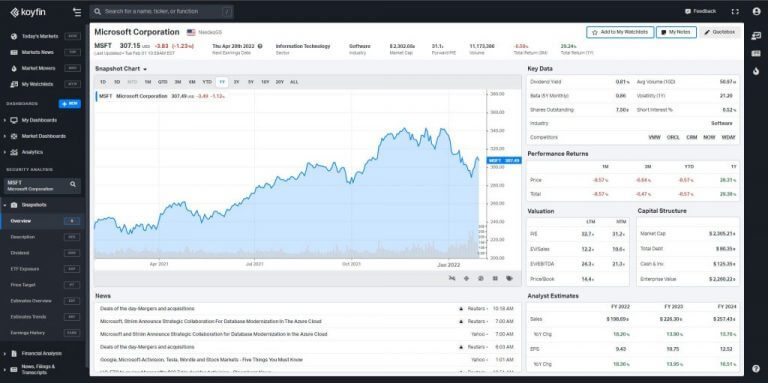Hours before reporting its second quarter financial earnings report, Microsoft’s stock had been trading low in anticipation of how the company did during yet another three months under a pandemic.
Fortunately, for investors, the pandemic continues to fertile ground for Microsoft as the company beat expectations yet again to the tune of $51.7 billion in revenue and $18.8 billion in net income for the quarter.
Some of the highlights for Microsoft’s Q2 for 2022 include the continued trend of Windows OEM revenue increasing by 25%, Xbox content and services showing 10% revenue growth, cloud growth of 26% and even Surface revenue coming back to life with an 8% increase for the quarter.
Microsoft’s Surface bump comes on the heels of the company’s decade mark for the product lines existence. Microsoft credits part of the revenue increase in the Surface division specifically to the Surface Laptop.
Per usual, Microsoft rode home on a 45% wave of revenue increase from its Azure cloud service.
Perhaps, most impressive this quarter for gaming is the 10% increase in revenue for Xbox Content and Services reported, following the huge $68 billion acquisition of Activision Blizzard.
Part of the Xbox revenue increases was highlighted last week when Microsoft revealed that it acquired 25 million subscribers to its Xbox Game Pass and with even more titles added to the platform, the service should continue to be a bright spot for the company.
For more details and context, below are the investor’s notes:
Productivity and Business Processes
Revenue increased $15.9 billion or 19%.
- Office Commercial products and cloud services revenue increased 14% driven by Office 365 Commercial revenue growth of 19%
- Office Consumer products and cloud services revenue increased 15% and Microsoft 365 Consumer subscribers grew to 56.4 million
- LinkedIn revenue increased 37% (up 36% in constant currency)
- Dynamics products and cloud services revenue increased 29% driven by Dynamics 365 revenue growth of 45% (up 44% in constant currency)
Intelligent Cloud
Revenue increased $18.3 billion or 26%.
- Server products and cloud services revenue increased 29% driven by Azure and other cloud services revenue growth of 46%
More Personal Computing
Revenue increased $17.5 billion or 15%.
- Windows OEM revenue increased 25%
- Windows Commercial products and cloud services revenue increased 13% (up 14% in constant currency)
- Xbox content and services revenue increased 10%
- Search and news advertising revenue excluding traffic acquisition costs increased 32%
- Surface revenue increased 8%
For some contextual outlooks on Microsoft’s earnings OnMSFT used tools from Koyfin.com to measure items such as financial analysis of cash flow, balance sheets, profitability, performance visualizations, company equity, multiples dividend yields and more in addition to the company’s own earnings statements.
Per usual, Microsoft is warning investors of some future-impact situations that will weigh on the stock in the coming months
- intense competition in all of our markets that may lead to lower revenue or operating margins;
- increasing focus on cloud-based services presenting execution and competitive risks;
- significant investments in products and services that may not achieve expected returns;
- acquisitions, joint ventures, and strategic alliances that may have an adverse effect on our business;
- impairment of goodwill or amortizable intangible assets causing a significant charge to earnings;
- cyberattacks and security vulnerabilities that could lead to reduced revenue, increased costs, liability claims, or harm to our reputation or competitive position;
- disclosure and misuse of personal data that could cause liability and harm to our reputation;
- the possibility that we may not be able to protect information stored in our products and services from use by others;
- abuse of our advertising or social platforms that may harm our reputation or user engagement;
- the development of the internet of things presenting security, privacy, and execution risks;
- issues about the use of artificial intelligence in our offerings that may result in competitive harm, legal liability, or reputational harm;
- excessive outages, data losses, and disruptions of our online services if we fail to maintain an adequate operations infrastructure;
- quality or supply problems;
- government litigation and regulatory activity relating to competition rules that may limit how we design and market our products;
- potential consequences under trade, anti-corruption, and other laws resulting from our global operations;
- laws and regulations relating to the handling of personal data that may impede the adoption of our services or result in increased costs, legal claims, fines, or reputational damage;
- claims against us that may result in adverse outcomes in legal disputes;
- uncertainties relating to our business with government customers;
- additional tax liabilities;
- the possibility that we may fail to protect our source code;
- legal changes, our evolving business model, piracy, and other factors may decrease the value of our intellectual property;
- claims that Microsoft has infringed the intellectual property rights of others;
- damage to our reputation or our brands that may harm our business and operating results;
- adverse economic or market conditions that may harm our business;
- catastrophic events or geo-political conditions, such as the COVID-19 pandemic, that may disrupt our business;
- exposure to increased economic and operational uncertainties from operating a global business, including the effects of foreign currency exchange and
- the dependence of our business on our ability to attract and retain talented employees.







